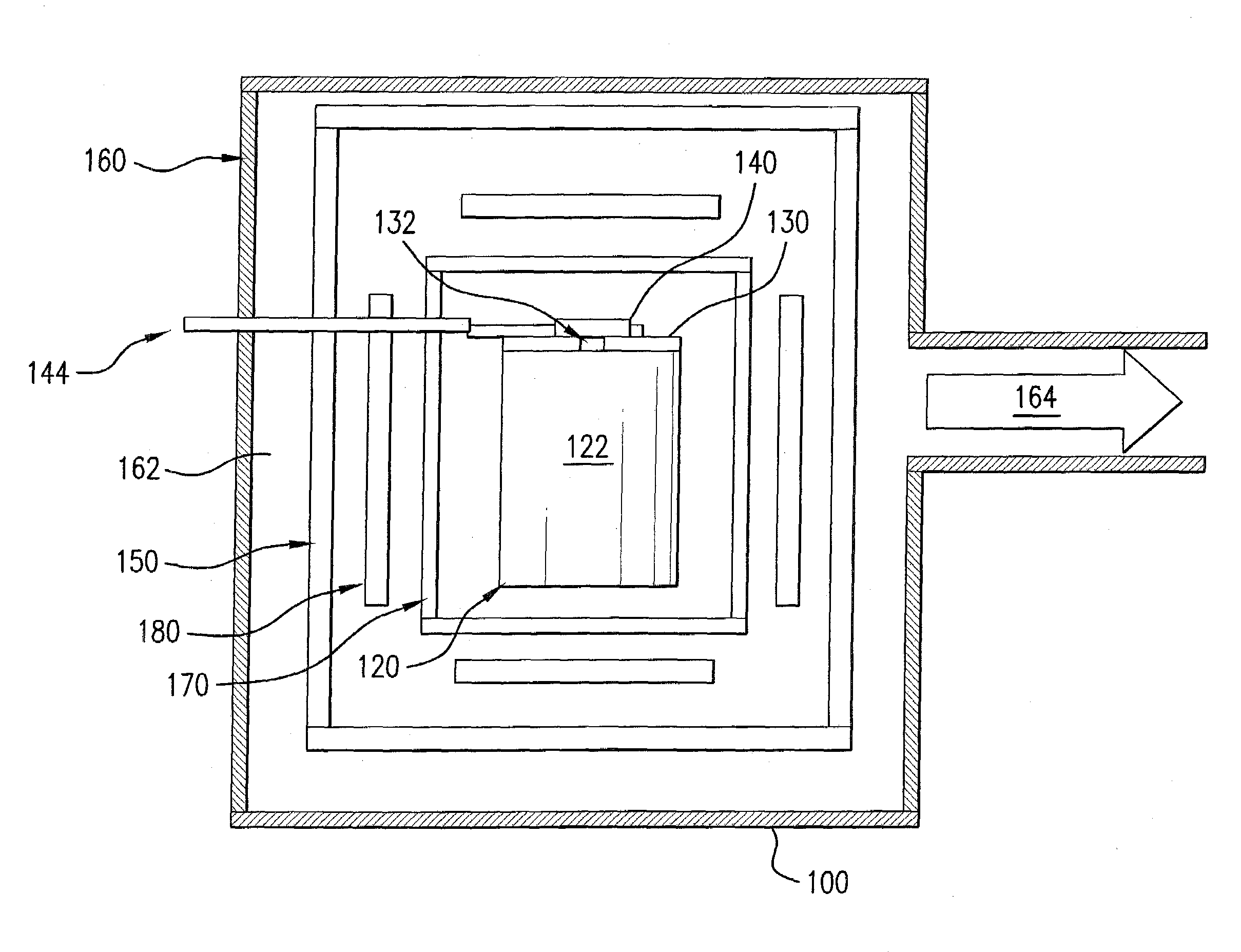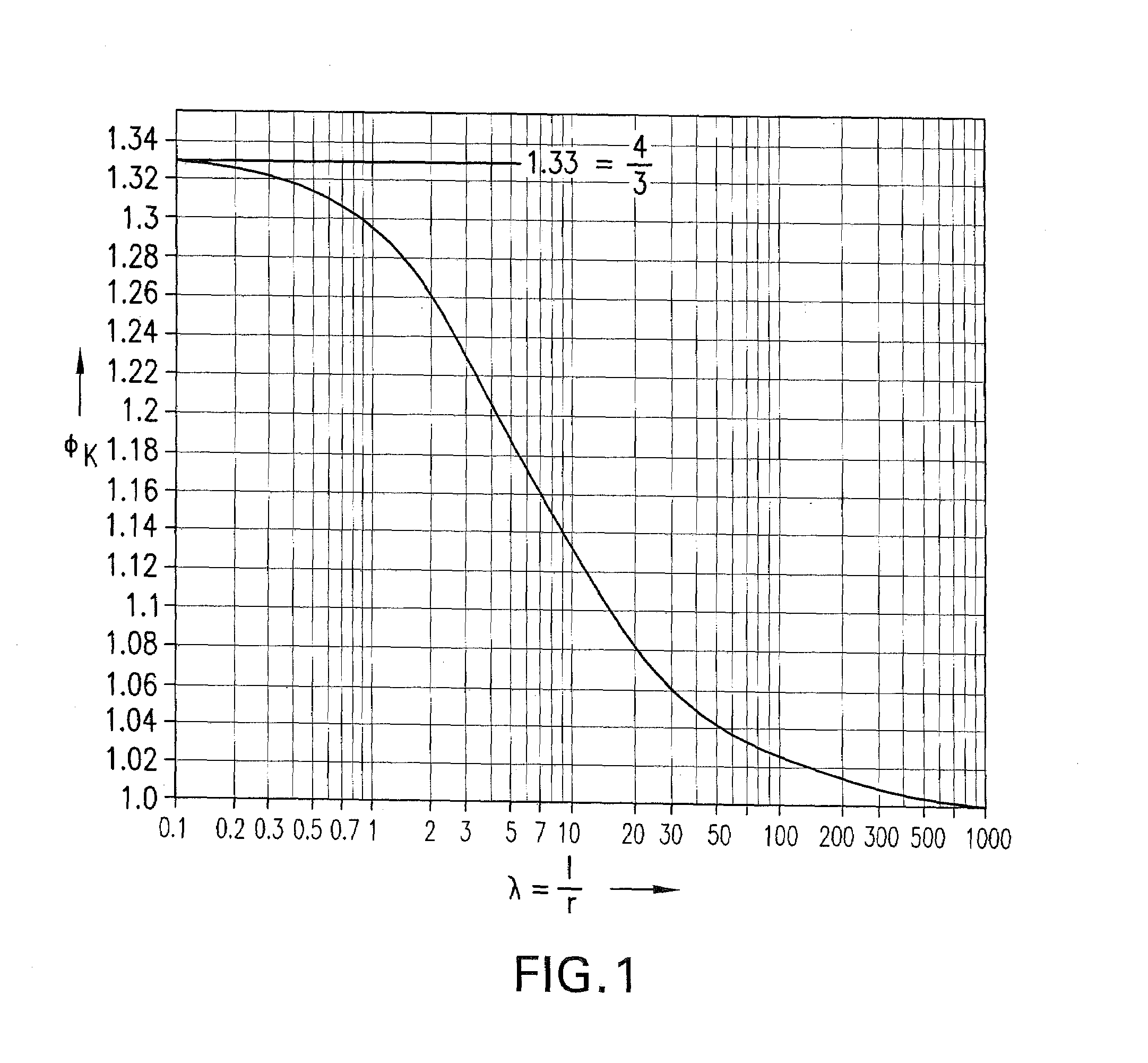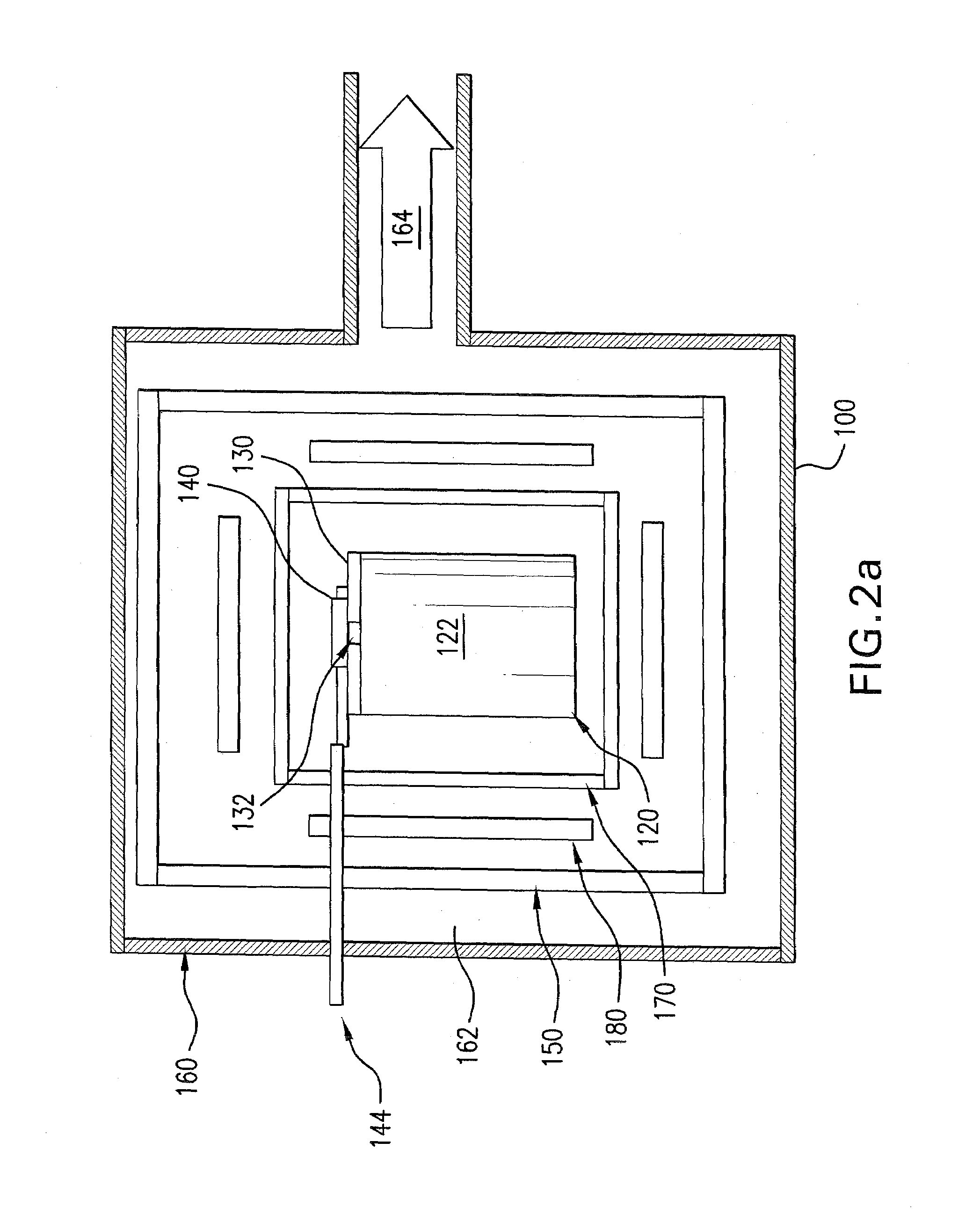Method and apparatus for purification of crystal material and for making crystals therefrom and use of crystals obtained thereby
a technology of crystal material and crystal material, which is applied in the direction of crystal growth process, instruments, melt solutions, etc., can solve the problems of poor image formation, increase the loss of chip production, etc., and achieve radiation resistance and laser damage in these crystals, scattering and absorption in the crystals made, and the effect of improving radiation resistance and laser damag
- Summary
- Abstract
- Description
- Claims
- Application Information
AI Technical Summary
Benefits of technology
Problems solved by technology
Method used
Image
Examples
example 1
[0034]In a melt vessel 60 kg of high purity synthetic calcium fluoride powder, in which cationic impurities typically were less than 1 ppm, were mixed uniformly with 1 percent by weight of PbF2 (typical amounts are 0.5 to 3 percent by weight). The melt vessel 120 was closed by means of a vessel cover 130 having an opening 132. A plate-shaped sliding mechanism for closing the opening was arranged on the vessel cover. The mechanism included passages or through-going holes 142a, 142b, 142c with respective radii of 4 mm, 0.15 mm and 1.2 mm and lengths of 10 mm, which corresponded to the different geometric conductance values of 24.7461 mm2, 0.0025 mm2 and 1.0195 mm2. After filling and closing the melt vessel a vacuum of 0.9*10−3 Pa (0.9*10−5 mbar) was produced at the vessel exterior and one of the through-going holes was arranged to coincide with the vessel opening 132. Subsequently the temperature was increased to 700° C. and increased from there with a heating rate of 12° C. per hour ...
PUM
| Property | Measurement | Unit |
|---|---|---|
| temperature | aaaaa | aaaaa |
| temperature | aaaaa | aaaaa |
| temperature | aaaaa | aaaaa |
Abstract
Description
Claims
Application Information
 Login to View More
Login to View More - R&D
- Intellectual Property
- Life Sciences
- Materials
- Tech Scout
- Unparalleled Data Quality
- Higher Quality Content
- 60% Fewer Hallucinations
Browse by: Latest US Patents, China's latest patents, Technical Efficacy Thesaurus, Application Domain, Technology Topic, Popular Technical Reports.
© 2025 PatSnap. All rights reserved.Legal|Privacy policy|Modern Slavery Act Transparency Statement|Sitemap|About US| Contact US: help@patsnap.com



